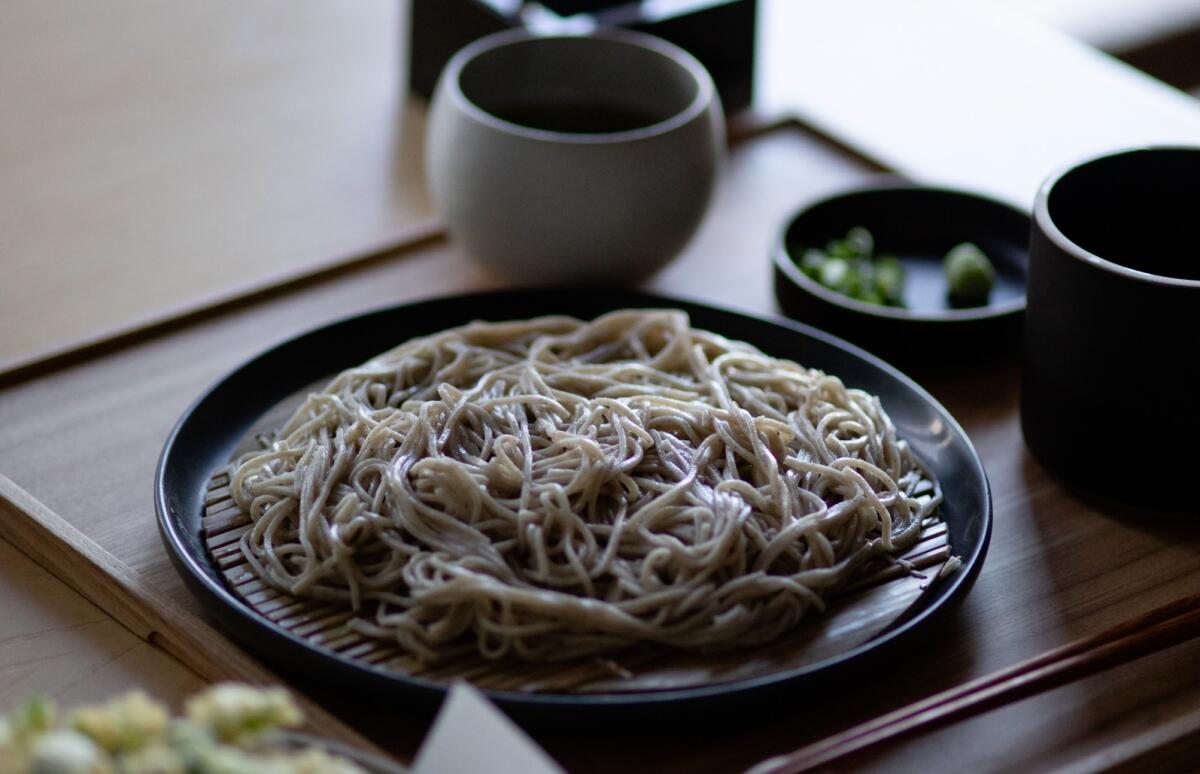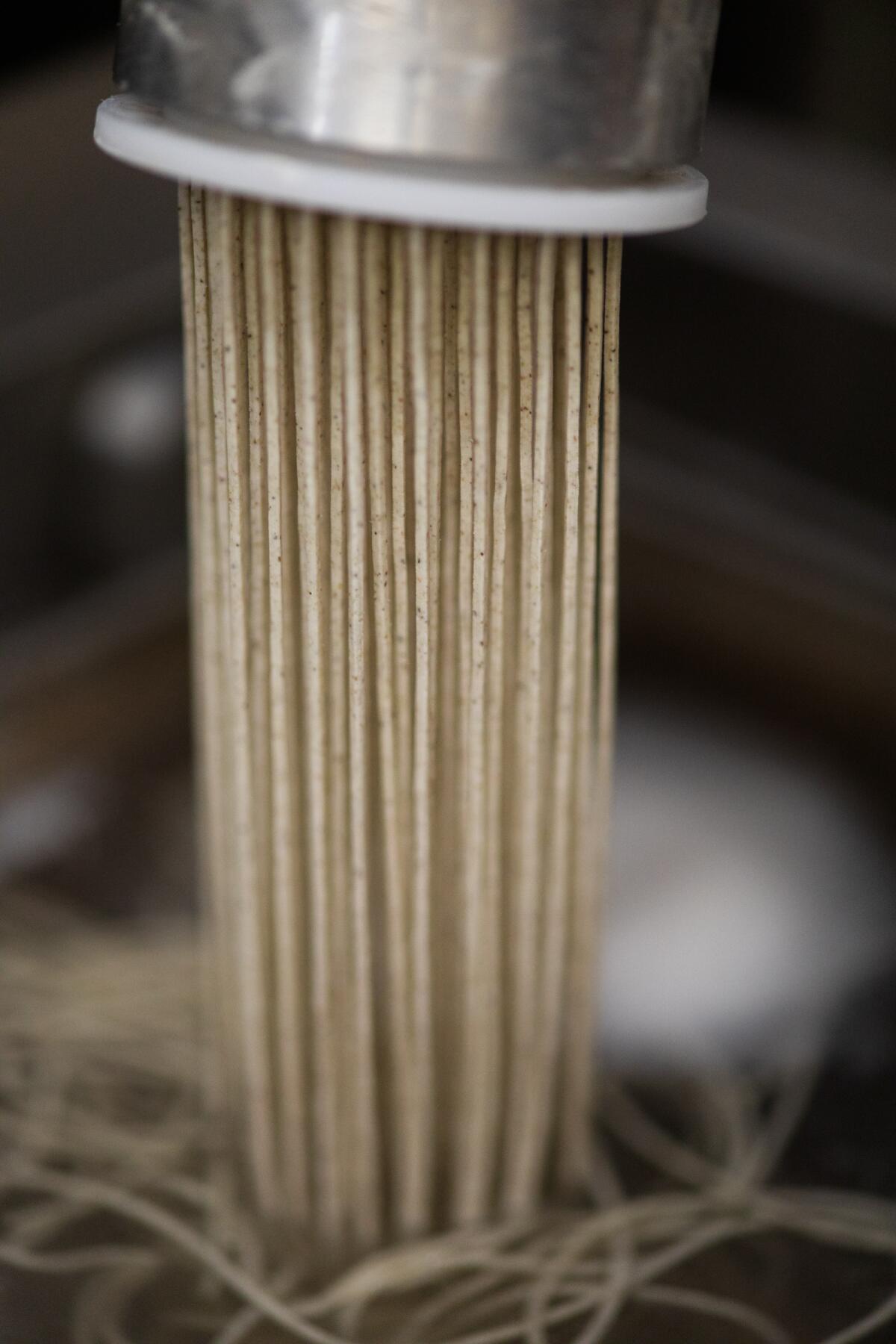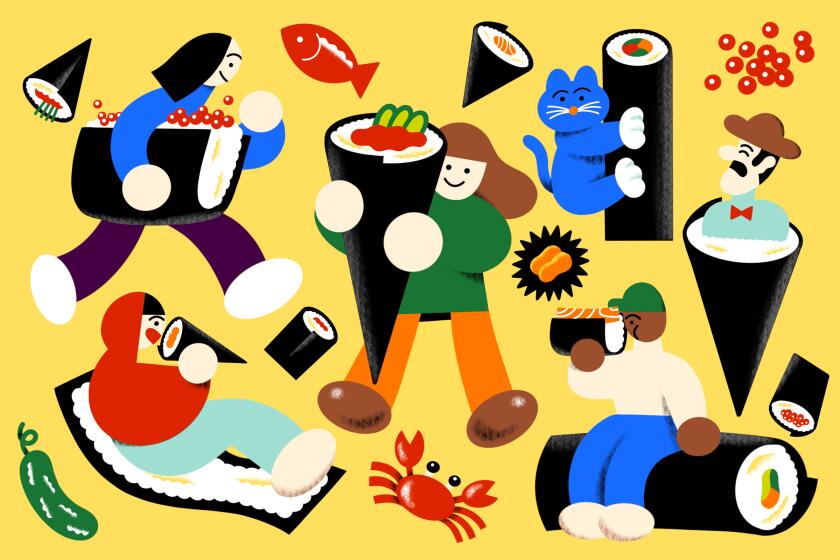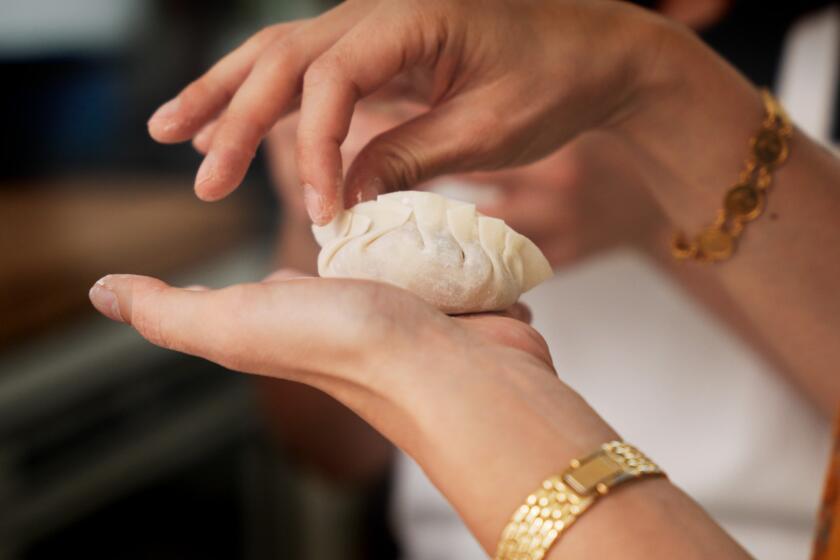Why my favorite lunch in all of L.A. is a naked plate of noodles

“I’m going to tell you how to eat it.”
The woman behind the counter at Sobar, a narrow restaurant on the congested corner of Washington Boulevard and Centinela Avenue in Culver City, is serious. My bamboo sieve of soba noodles comes with a set of verbal instructions.
“First, taste the noodle on its own.”
She mimics picking up the noodles with the chopsticks and eating them.
“Enjoy the noodle. Then, sprinkle some yuzu salt onto one bite. Not the entire thing. Then try the matcha salt. Then you can dip. OK?”
OK.
The menu at Sobar is centered around Ju-Wari soba, a naturally gluten-free noodle made entirely of buckwheat flour and water. This is where you contemplate eating a humble tray of bare, speckled gray noodles for lunch. Is there enough in the chewy strands to captivate and satiate in a way that feels sufficient for a midday indulgence? There is.
The best hand roll bars in Los Angeles are part of the fabric of the city’s sushi scene, serving delicious, super-fresh temaki at affordable prices.
“I see a lot of ramen restaurants here are so popular now,” chef-owner Masato Midorikawa says on a recent call. “I’m trying to expand more soba culture here in the United States.”
Midorikawa opened Sobar in August 2023 with the help of Shunji Nakao, under whom he worked at Shunji restaurant.
Despite a handful of other soba specialists in the South Bay and Little Tokyo, Midorikawa believes soba is lagging in popularity lately. The noodles can be difficult to make, and the dish overall is not as sexy as a steaming bowl of hot broth crowded with sliced pork, egg and vegetables.
With efficiency and consistency in mind, he and a partner in Japan developed a machine to make the fresh Ju-Wari noodles — a specific, pure form of soba.
“You need a specially skilled chef to make true Ju-Wari soba,” he says. “This is the first time a noodle machine is made for making Ju-Wari.”

Midorikawa mixes the water and buckwheat flour every morning, and each tray of noodles is made to order. They’re denser and more brittle than soba made with the addition of wheat flour. The deep, earthy flavors are more intense.
The yuzu salt is bright with citrus. The matcha salt is pale green and subtly grassy. The first bite with a sprinkle of yuzu immediately clicks, the salt drawing out and magnifying the nuttiness of the buckwheat.
“We make the matcha and yuzu salts here,” Midorikawa says. “To eat soba with salt is my favorite style, but not too many people know about it.”
I do as I’m instructed. Only after I try both salts do I turn my attention to my dipping sauce.
The noodles that accompany the kamo negi soba are like thin, flat fettuccine. I swish them around in the hot cup of soy and dashi, then slurp the noodles as they drip onto the counter on the way to my mouth. There is no graceful way to eat this. I wipe my chin with my napkin.
On this week’s episode of ‘The Bucket List: Dumplings,’ we learn about Japanese gyoza, what makes them so delicious, and who is making them in L.A.
My dining companion’s noodles are thinner and rounder. She dunks them into a cup of tsuyu, a cold broth made with katsuo dashi, soy sauce, scallion and wasabi. Her sliver of the counter is equally spotted with drops of broth.
I recommend focusing on the soba, but there’s plenty on the menu to build out a more elaborate meal. The kakiage in particular is the preferred fried sidekick to a tray of noodles. It’s served as a tangled cylinder of fried shrimp and onions, like a miniature version of the old onion ring loaves at Tony Roma’s.
After a few minutes, we push aside the dipping sauces and return to the salts, craving the pure flavor of the buckwheat and drier chins.
Where to get your soba fix
Sobar, 12404 W. Washington Blvd., Los Angeles, (310) 439-1029, sobar-usa.com
More to Read
Eat your way across L.A.
Get our weekly Tasting Notes newsletter for reviews, news and more.
You may occasionally receive promotional content from the Los Angeles Times.













